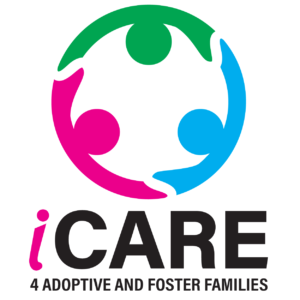The Essential Role of School Social Workers in Fostering Family Bonds and Belonging

When it comes to supporting foster, adopted, and kinship children, we all know it’s about more than just helping them fit in or keep up with schoolwork. It’s about making sure they feel like they truly belong—both at school and at home. In this journey, we need the expertise and compassion of school social workers who understand the complexities of attachment and the healing process. These professionals are integral in helping children feel safe, seen, and supported.
But here’s the catch: while school social work professionals can play a huge role in helping kids bond and feel connected, things can easily go off course if we aren’t mindful about involving the whole family in the process. Parents and caregivers are the foundation of healing, and their involvement is crucial to ensuring children can thrive. In fact, the evidence-based best practices for working with adopted, foster and kinship children is to include the family with attachment-based interventions.
For kids who have experienced foster care, adoption, or kinship placements, the journey to feeling at home can be tough. While emotional support from school social workers can be vital, the process of building attachment and a sense of belonging is something that needs careful handling—especially when it involves bonding with school professionals.
The Problem: Bonding Without Involving the Parents
It’s easy for children with attachment trauma to form attachments to school professionals—like social workers, counselors, or teachers—who provide them with care and attention. But without the active involvement of their caregivers, this bond can inadvertently sideline the caregiver and parent in the child’s emotional growth.
Often, these kids have learned to be self-reliant, building walls around themselves to protect against further hurt. The thought of forming another attachment to a caregiver or parent can be frightening. They may have a deep-seated fear of abandonment, or they may not even know what a healthy, trusting relationship with a parent looks like. These kids may struggle to understand the concept of unconditional love or care, especially if their past experiences have been filled with instability, neglect, or rejection.
When a child begins to feel a strong attachment to a school professional without the same sense of connection to their caregivers, it can create an emotional disconnect. The child may start to rely more on the school professional for emotional support than on their caregiver, which could undermine the family’s ability to establish their own secure bond. It can also send a message that the school is where they truly “belong,” rather than at home with their caregivers.
Furthermore, the complexity of the situation is amplified by the fact that school social workers are not holding them accountable for things like homework, family chores, or the daily routines that are part of a healthy family life. These expectations can feel overwhelming for a child still adjusting to a new family dynamic, and the absence of these pressures within the school setting can create confusion. Without the same structure and accountability at school, it may be harder for the child to understand what their new life at home should look like or what a parent’s role should be. It can also feel as though the school is a “safe haven” where they can avoid facing these challenges, leading them to develop an attachment to the school environment rather than to their caregivers at home.
The Role of the School Social Worker in Bridging the Gap
That’s where school social workers really make a difference. They aren’t just helping the child feel seen—they’re also ensuring that the child’s emotional needs are understood in the context of their whole family. The school social worker can help the child feel safe within their new family by reassuring them that their caregivers are there to provide the consistency, care, and guidance that is necessary for healing.
By collaborating closely with adoptive and foster parents or caregivers, and following best practices, school social workers can help them understand the child’s emotional world and offer guidance on how to foster attachment and trust. This doesn’t mean that the social worker stops providing support to the child—it means they’re bridging the gap between school and home, so the child can feel secure in both places. The child begins to understand that the school is part of their support system, but so is their family—and that both can work together to help them thrive.
As Beth Shabelman, a School Psychologist from D72 in Illinois, puts it: “As a school mental health professional I feel strongly my role extends far beyond the physical school building. In order to support my students I collaborate regularly with parents, community resources, and private mental health providers. The theories I learned in school are helpful. But it has been through ongoing trainings and hands-on experience that I have been able to truly understand the importance of supporting students, both in and out of the school building, in order to help them feel safe and cared for.”
How Collaboration Builds Stronger Connections
When caregivers are involved in the process, they can learn strategies for reinforcing the emotional support their child receives at school. This shared effort between school professionals and caregivers creates a consistent environment where the child doesn’t feel torn between two worlds. Instead, they can feel the emotional support and stability from both home and school, which is key to fostering a deeper, more lasting sense of belonging.
The school social worker’s role, in this case, isn’t just to support the child—they’re also guiding the adults around the child to make sure everyone is aligned and working together. This partnership between school professionals and caregivers ensures that the child has the emotional security they need to develop healthy, trusting bonds, both with their family and with the school.
Moving Forward: The Power of Teamwork
At the end of the day, creating a sense of belonging for foster, adopted, and kinship children isn’t just about school professionals providing care—it’s about collaboration. Without involving the child’s caregivers, we risk creating an emotional disconnect that can ultimately leave the child feeling torn between two worlds. But when social workers, teachers, and caregivers work together, the child gets the emotional consistency they need to thrive.

